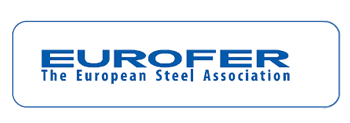Brussels, 8 May 2018 – In 2017 the EU’s steel market performed healthily, supported by a marked improvement in business conditions on both domestic and international markets. Key drivers were investment and exports. While economic fundamentals bode well for further growth in EU steel demand, the increasing threat of protectionism and the potential of retaliatory measures leading to a global trade war is the key risk to an otherwise positive outlook.
“The latest data shows that the European steel industry has finally struggled its way back towards a firmer footing”, said Axel Eggert, Director General of the European Steel Association (EUROFER). “Worryingly, this recovery is being put at risk by the US’ Section 232 action and the resulting global economic fallout. Surges of deflected imports to the EU market could cause irreparable damage to the EU steel industry if adequate safeguards are not put in place”.

EU steel market overview
EU28 apparent steel consumption fell by 0.3% year-on-year in the fourth quarter of 2017.
Similar to the trend in supply flows registered in the third quarter of 2017, domestic deliveries to the EU market also rose in the fourth quarter – by 3.4% year-on-year – whereas imports from third countries were 9% lower than in the same period of 2016. Total steel imports fell by 1.8% in 2017, reflectin9 a 7.9% year-on-year rise over the first half of the year and an 11% year-on-year drop over the second half.
While the EU market has seen an increase in inventories in 2016, the rather rapid expansion of final use over the year 2017 – and even supply bottlenecks – led to players in the distribution chain drawing down inventories later in the year. This led to a modest overall decline in stocks. As a consequence, EU28 apparent steel demand rose by 1.3% in 2017.
Prospects for a continued recovery in EU steel demand are positive. The expected strength of most steel-using sectors bodes well for the demand side of the EU steel market. However, the supply side situation could be negatively affected by import distortions.
This is particularly true within the current context of the increased risk of a sudden surge of imports in the wake of the US’ decision to impose blanket tariffs on foreign steel. This may cause a significant deviation of otherwise US-bound steel trade flows towards the EU market.
EU steel-using sectors
Production activity in EU steel-using sectors ended the year 2017 on a strong footing, with output rising by 5.8% year-on-year in the fourth quarter. Total output rose by 5% over the whole year 2017. Most sectors had their best performance since 2011. The main exception was the automotive industry where as expected output growth slowed down, reflecting a mild weakening of demand in the EU and in key export markets.
Total production activity in the steel using sectors is estimated to have grown by 2.7% in the first quarter of 2018. This is basically the result of a negative trend in steel tube output in the EU. Prospects for 2018 and 2019 are quite healthy. It was already anticipated that due the temporary impulse from the steel tube sector falling away, total activity growth in the steel using sectors would ease in 2018 and 2019. Slowing production growth in the automotive sector will also have a mitigating impact on the growth rate of activity in the steel using sectors.
Output in EU’s steel-using sectors is forecast to grow by 2.8% in 2018 and by 1.9% in 2019.
EU economic context
The EU economy grew by 2.5% in 2017, its best performance since 2007.
Economic sentiment weakened in the first quarter of 2018. This downward trend appears to be more strongly linked with supply chain bottlenecks in industry than with a sudden weakness in demand, prospects for a continuation of the current upturn in capital expenditure are positive. Support is provided by easy access to finance and still solid confidence levels.
Exports are also expected to continue to contribute to economic growth. The outlook for global economic growth bodes well for international trade. However, the increasing threat of protectionism and euro strength could dampen potential export growth.
Eurostat’s preliminary flash estimate for the first quarter of 2018 signals GDP growth of 0.4% quarter-on-quarter in the EU28.
EUROFER forecasts EU GDP growth of 2.2% in 2018 and of 1.9% in 2019.
EUROFER economic and steel market outlook second quarter, 2018
The EUROFER Economic and Steel Market Outlook: second quarter, 2018 can be found: here
About the European Steel Association (EUROFER)
EUROFER AISBL is located in Brussels and was founded in 1976. It represents the entirety of steel production in the European Union. EUROFER members are steel companies and national steel federations throughout the EU. The major steel companies and national steel federations in Switzerland and Turkey are associate members.
About the European steel industry
The European steel industry is a world leader in innovation and environmental sustainability. It has a turnover of around €170 billion and directly employs 320,000 highly-skilled people, producing on average 160 million tonnes of steel per year. More than 500 steel production sites across 22 EU Member States provide direct and indirect employment to millions more European citizens. Closely integrated with Europe’s manufacturing and construction industries, steel is the backbone for development, growth and employment in Europe.
Steel is the most versatile industrial material in the world. The thousands of different grades and types of steel developed by the industry make the modern world possible. Steel is 100% recyclable and therefore is a fundamental part of the circular economy. As a basic engineering material, steel is also an essential factor in the development and deployment of innovative, CO2-mitigating technologies, improving resource efficiency and fostering sustainable development in Europe.
